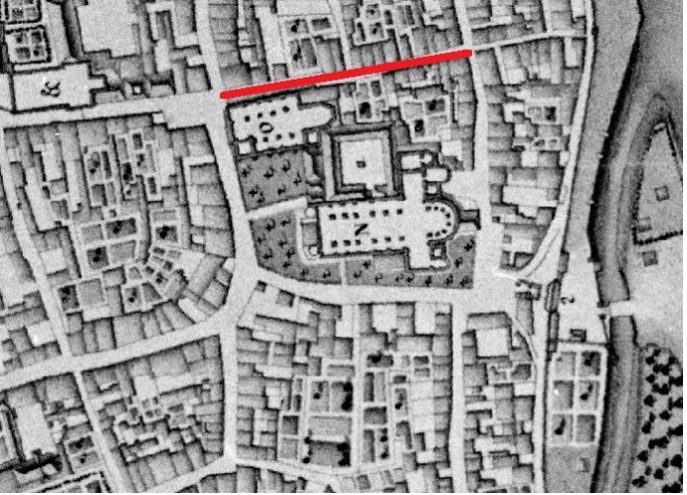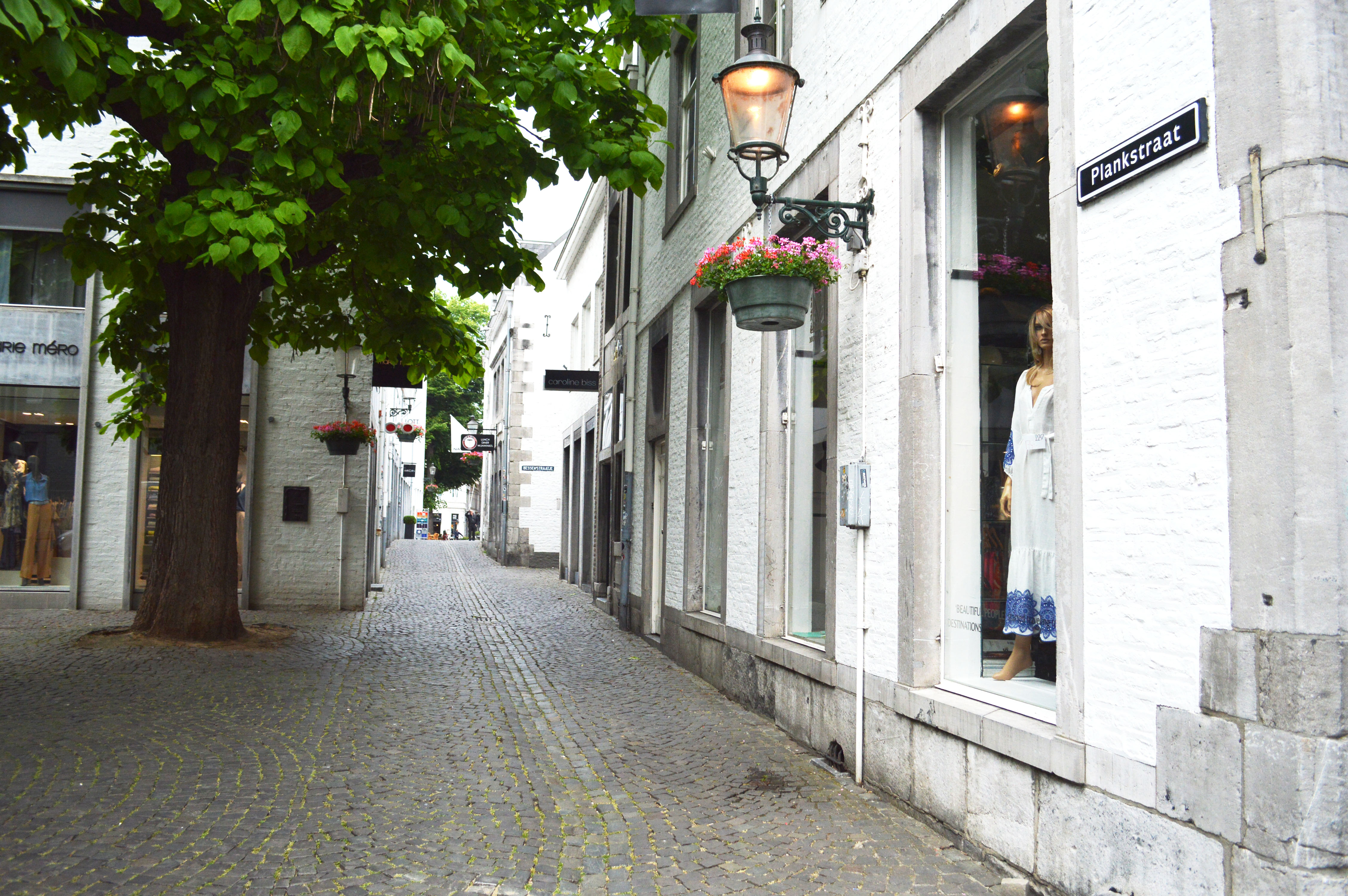
 |
| Fig. 37: Location of the Plankstraat |
The name Plankstraat probably refers to the wood market, or to craftsmen who processed wood. But the Latin name of 'vetus macellum' probably also refers to an (old) slaughterhouse or meat house that used to be on site, before it was relocated to the new location between the Grote Staat (Sint Jorisstraat) and 'Achter het Vleeshuis'. Over the centuries, many butchers lived in the area north of the church complex. The street originally led past the Church of Saint Nicolas to the Wolfstraat and was only widened in 1779 (the street used to be even narrower and a lot longer). The house of the chaplain of the Church of Saint Nicholas was located in this street. The street also marks the exact route of the Roman road, which dates from the beginning of our era. In the middle of the Plankstraat, the remains of the first Maastricht city gate from the fourth century CE have also been found.
 |
| Fig. 50: The Plankstraat today. |
Reference:
Schaepkens van Riemst, J., “Eenige bijzonderheden omtrent straten, pleinen en bewoners van het oude Tricht”, in: Publications de la Société Historique et Archéologique dans le Limbourg, 43 (1907), 39-369; PSHAL 67 (1931), 187-232; PSHAL 68 (1932), 71-112; PSHAL 69 (1933), 63-86.